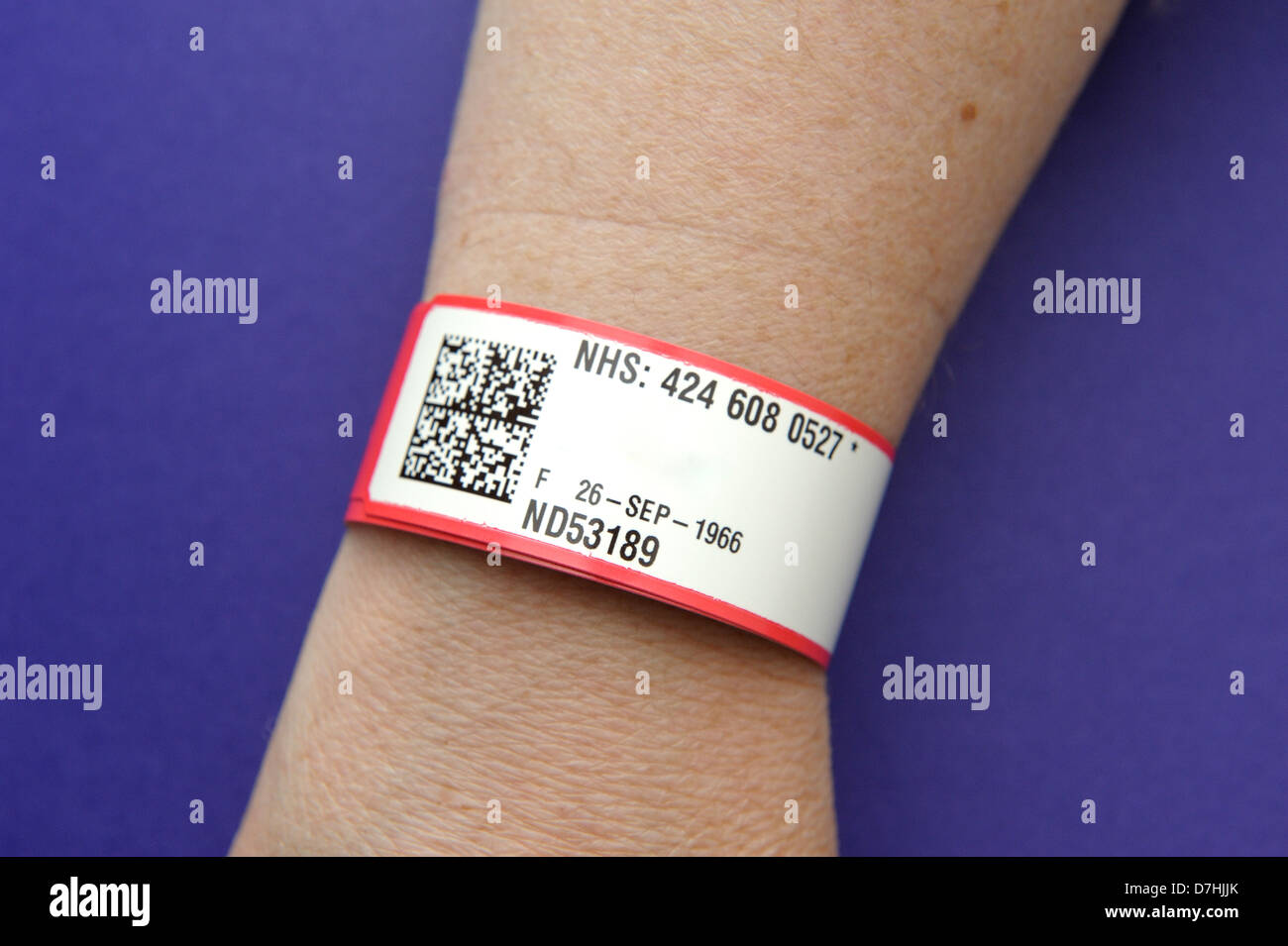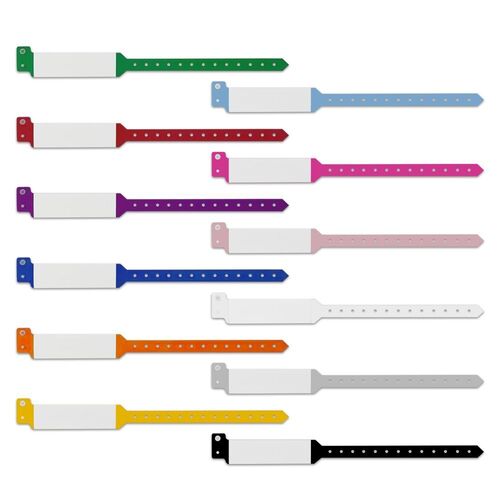Exploring the Numerous Types of Patient Identification Band Utilized in Clinical Facilities
In the detailed world of healthcare, the crucial duty of Patient Identification bands commonly goes unnoticed. These bands, differing from basic paper wristbands to advanced RFID bands, create the backbone of Patient security protocols, making certain precision in Patient Identification. The vast variety of these bands, each with its unique advantages and limitations, is usually neglected. As we browse through this subject, one may get understanding right into the subtle complexities and critical value of such bands in medical facilities.
Recognizing the Importance of Patient Identification Bands
While they might seem like simple devices, Patient Identification bands play an important function in clinical centers. These bands work as an important device for confirming Patient identity, stopping clinical mistakes related to misidentification. The bands usually show important info such as the Patient's name, age, blood group, and any kind of known allergies. They allow health care experts to swiftly access this essential information, thus helping with timely and precise clinical treatment. Patient Identification bands also aid in improving administrative tasks, guaranteeing precise record-keeping and invoicing. In spite of their simplicity, these bands embody the principle of Patient safety and security, a cornerstone of top quality wellness treatment. Without them, the threat of clinical errors, and as a result, Patient harm, could dramatically raise.
Traditional Paper Wristbands: Their Use and Limitations
Standard paper wristbands have been a staple in Patient Identification throughout different medical centers. While their usage is widespread, they nurture certain constraints that might impact their performance in Patient monitoring. This section will certainly concentrate on the scope of their application and the integral disadvantages related to their usage.
Paper Wristbands: Usage Scope
In the realm of Patient Identification, paper wristbands have actually long held a vital duty. These bands are normally utilized in outpatient setups, where the Patient's keep is short-term. The wristbands have necessary information such as the Patient's name, day of birth, and a distinct Identification number. This easy, yet reliable system, allows clinical professionals to swiftly and accurately determine people, guaranteeing the proper treatment is provided. Paper wristbands are additionally utilized in emergency scenarios, where rapid Identification is extremely important. Their use includes occasions like blood donation drives and mass vaccination programs, additionally stressing their flexibility. In spite of innovations in technology, the simple paper wristband continues to be a cost-efficient and reliable service for Patient Identification in numerous medical care scenarios.
Limitations of Paper Wristbands
Regardless of their extensive use, paper wristbands are not without their drawbacks. In enhancement, paper wristbands often lack the technical capabilities of more modern-day alternatives, such as barcoding or RFID chips, limiting their functionality to simply showing written info. Paper wristbands can create pain or skin inflammation to some patients, especially when put on for prolonged durations.
Barcoded Wristbands: Improvements in Patient Identification
While Patient Identification has actually long been a vital aspect of health care, the arrival of barcoded wristbands represents a substantial leap onward. These bands utilize the simpleness of barcoding technology, permitting for Patient info to be quickly checked and accessed. They improve the speed and accuracy of Patient Identification, reducing the danger of medical errors associated with misidentification. Barcoded wristbands are cost-effective, simple to generate, and eliminate handwriting mistakes typical with hands-on systems. However, they are not without constraints. While they supply improvements over standard bands, the barcode can become smudged or worn, making it unreadable. Regardless of this, barcoded wristbands continue to be an important tool in contemporary health care settings, representing the crossway of innovation and Patient treatment.
Superhigh Frequency Identification (RFID) Bands: a Step In The Direction Of Futuristic Medical Care
The development of Patient Identification bands has actually brought concerning the introduction of Superhigh frequency Identification (RFID) Bands (patient identification band). These innovative tools existing essential advantages for medical care centers, using a more efficient and highly advanced description means of Patient Identification. The implementation of RFID in medical care is a considerable step towards an extra futuristic approach to Patient administration and safety
Recognizing RFID Bands

RFID Bands: Secret Benefits
Accepting a future where innovation and health care merge, radio regularity Identification bands use a number of essential advantages. Largely, these bands boost Patient safety by providing exact, immediate Identification, thereby lowering clinical errors. RFID bands can save a substantial amount of Patient data, consisting of clinical history and allergic reactions, making it possible for customized treatment. They likewise improve management jobs, as the automated data access replaces hand-operated processes, improving performance and decreasing documentation. RFID bands provide real-time monitoring of clients, essential in high-risk settings such as surgical treatment or extensive care. Last but not least, these bands are resistant and long lasting to ecological elements, making certain constant capability. Generally, RFID bands stand for a significant improvement in Patient Identification technology, profiting both people and doctor.
Carrying Out RFID in Health Care
As we tip right into a highly innovative age, the application of RFID bands in health care ends up being progressively crucial. These bands supply a seamless method to track and identify clients, ensuring their safety and improving performance in treatment procedures. RFID bands offer numerous advantages over traditional Identification methods. They can store a large amount of information, consisting of the Patient's case history and treatment strategies, which can be conveniently accessed by doctor. This information aids medical professionals make informed decisions regarding the Patient's therapy strategy. Furthermore, RFID bands reduce medical errors by giving accurate Patient Identification, which is critical in stopping misdiagnosis or wrong medicine management. Hence, the application of RFID bands is a significant action towards boosting Patient safety and security and healthcare distribution.

Color-Coded Wristbands: Helping in Quick and Accurate Diagnosis
In the busy setting of a clinical center, color-coded wristbands have actually emerged as vital tools for swift and exact Identification of an individual's clinical condition. These wristbands, used by people, carry particular shades that match to various medical conditions or conditions. This system is made to offer immediate visual hints to medical care service providers, improving Patient safety and care quality.
Methods for Reliable Execution and Management of Patient ID Bands
Achieving ideal use of Patient Identification bands requires a well-structured method for their implementation and monitoring. The initial action entails training all wellness employees on the importance of correctly using and reviewing these bands. Healthcare facilities must standardize the use of ID bands across all divisions, making certain harmony and minimizing inconsistencies. Regular audits should be performed to validate adherence to plans and to correct any inconsistencies. Patient education and learning is likewise essential; patients have to comprehend the function of the bands and the need for their consistent wear. patient identification band. It's vital to have a backup strategy in place, such as barcode scanning or biometrics, to make certain that Patient Identification is never compromised.
Conclusion
Patient Identification bands are crucial in clinical facilities to make sure safety and accuracy. Typical paper, barcoded, RFID, and color-coded wristbands each hold distinct benefits, varying from cost-effectiveness to advanced information storage space and instant medical signals. Effective application and link monitoring of these bands can considerably minimize clinical errors, increase performance, and boost overall Patient care. Therefore, understanding and making use of these Identification tools is critical for preserving high criteria in healthcare.
These bands, differing from straightforward paper wristbands to innovative RFID bands, create the foundation of Patient safety and security protocols, ensuring precision in Patient Identification.The advancement of Patient Identification bands has brought regarding the appearance of Recommended Site Radio Regularity Identification (RFID) Bands. In general, RFID bands stand for a considerable innovation in Patient Identification innovation, profiting both individuals and medical care companies.
RFID bands lower clinical errors by providing exact Patient Identification, which is important in stopping misdiagnosis or wrong medicine administration. Patient education and learning is additionally essential; clients need to understand the objective of the bands and the need for their constant wear.